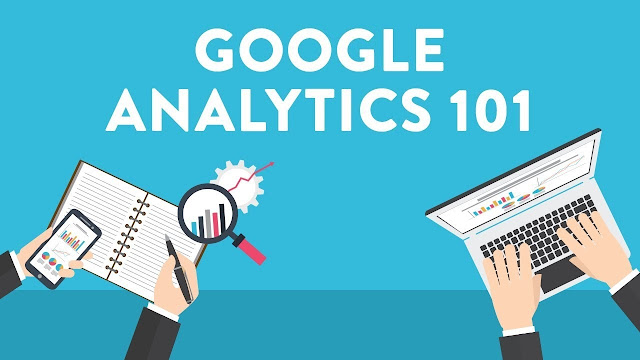Google Analytics 101
Many webmasters are underutilizing one crucial factor that has the power to make or destroy the success of any website, or
much worse, they don't use it at all. Analytics is that. to be precise, Google Analytics.
In fact, if you use it correctly, you may learn a variety of other information, such as your bounce rate, most popular pages or articles, and even your conversion rates, in addition to monitoring how much and where your site's traffic is coming from.
The trouble is, it can be confusing. There are tons of features that seem hopelessly hidden amongst a wide variety of options, and the majority of people don’t even know they’re there, much less how to use them.
In this guide, you’re going to learn about some of the most important features of Google Analytics, and how you can use those features to improve your traffic, conversions and more!
So let’s get started, shall we
If you don't already have one, you should first create a Google Analytics account:
You may make use of an active Google account. Simply log in and select "Sign up," and you can begin utilizing Google Analytics.
Analytics with WordPress
You can use a handy small plugin to make it simpler to install Analytics on your pages if you're using WordPress, which a lot of websites do these days. If your theme doesn't already have a designated spot for adding your Analytics code, this is extremely useful. (A few do.)
101 Google Analytics
You might want to look into the Analytics by Yoast plugin if your theme doesn't already support it. This plugin will automatically add your Analytics code to all of your posts and pages after connecting to your Analytics account and letting you select which website you want to track.
There are five report suites inside Google Analytics that will each offer you different types of information. These five different report times include:
• Real Time
• Audience
• Acquisition
• Behavior
• Conversions
Some sites may not use all of these reports. For example, if you’re not
selling anything, you may not need to use the conversions suite.
(However, it’s still useful for tracking conversions to your email list and
such.
Real-Time
Real-time reports let you know what is happening with your site right
now. You can find out what is happening on your website at the moment
you’re viewing the report. This will give you live information about how
much traffic you’re getting and what pages people are currently viewing
Audience
The audience reports give you information about the people visiting your
site. They let you know their demographics such as age and gender, their
interests, where they are located, what type of devices and browser they
use, etc.
Acquisition
Acquisition reports tell you where your traffic is coming from. It gives you
information such as keywords used to find you and links they came from.
This will help you determine which are your most effective keywords and
marketing channels
Behavior
The behavior reports give you information on things like which pages visitors are visiting, where they go after viewing your pages, how quickly they load, etc. This will show you which articles are the most read and what you can change to increase reader enjoyment of your material.
Conversions
The conversion reports will show you how successful your website is in generating sales, email signups, or any other action you want visitors to take.
These are the five various report types and the information each one can provide. Ideally, you'll be utilizing each of these several report types to maximize the power Google Analytics has to offer. These statistics can teach you a lot about how to boost your traffic and conversions.

Comments
Post a Comment